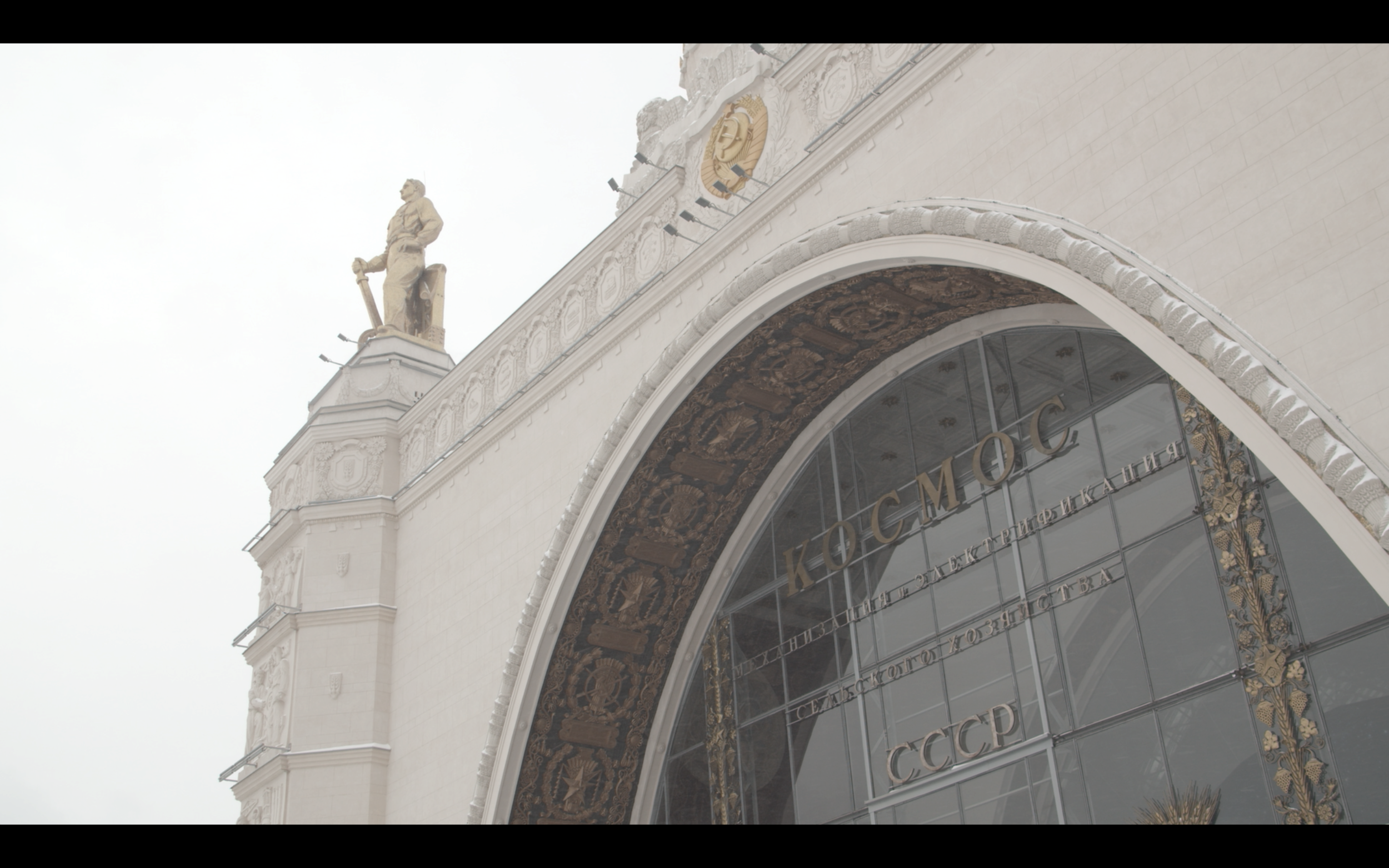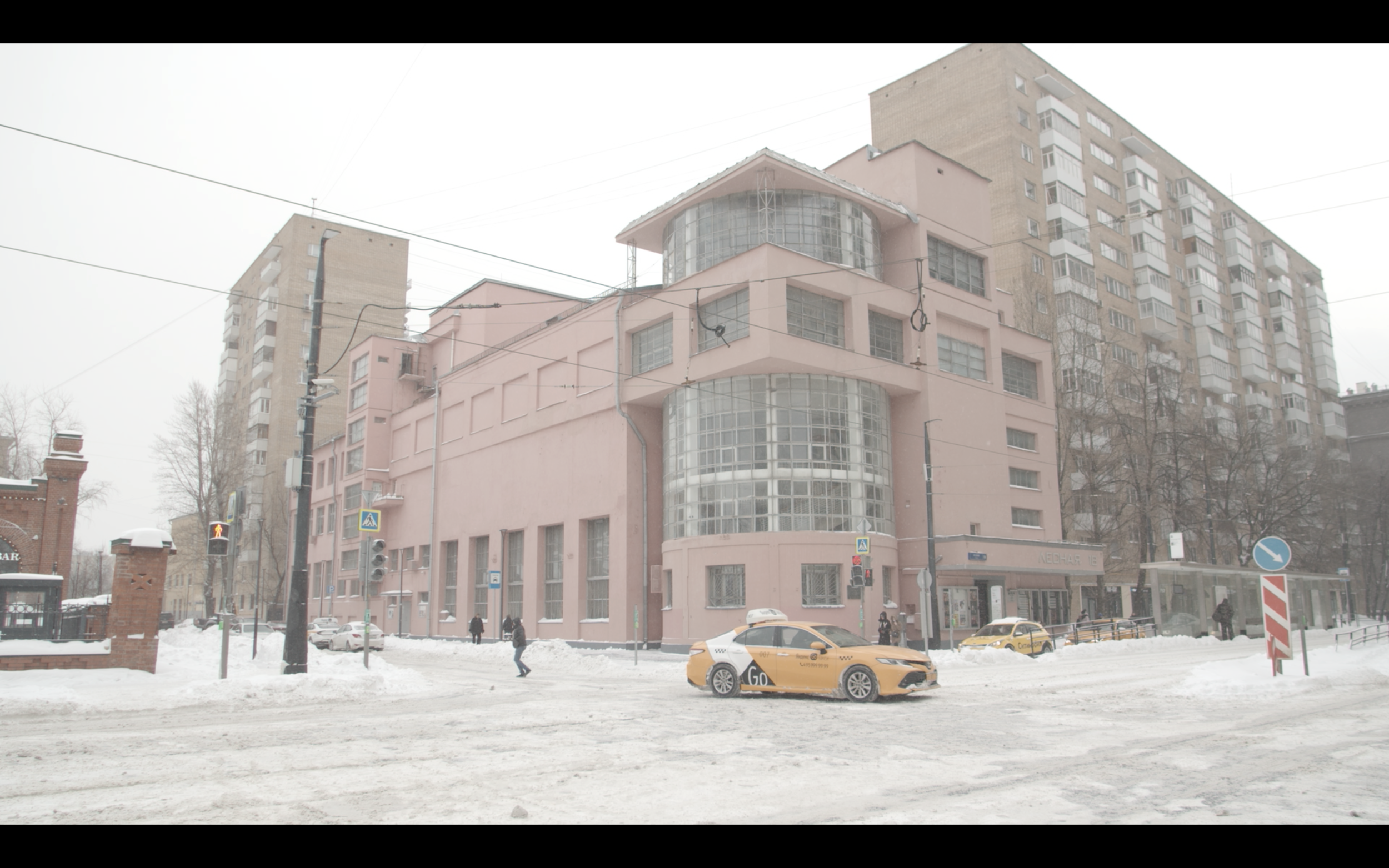Data Field, Part 2: The Spirit of Soviet Modernity, or Everyday Science Fiction
Alexandra Anikina shares her notes on the series of film-essays, Data Field. combining notions of futurity and utopia, she contemplates the very creation of history.
Data Field is a series of film essays on the techno-ideological construction of time. The series focuses on Soviet and post-Soviet media technologies acting as media mythologies. The rituals, artefacts, and visuals of Soviet modernity, mapped onto my own family history, become entry points into the role of technology in the constructions of the future.
It is well-known that the socialist utopia was attached very unevenly to the fabric of social life. By consequence, it is often reduced to its traumatic or utopian extremes, where it would be better to consider its complexity. I felt the misplaced temporality of Soviet past in my childhood, and still feeling it now, as a Russian artist working in the West, when faced with reductionist views of my history and cultural context. By navigating the notion of history using my family’s history as a map, I want to break the illusion of a monolithic Soviet utopian project, and instead address the ‘utopian gaze’ that identifies the multiplicity of temporalities, fragments, gaps, affects, and symbols as parts of utopia, following Irina Kaspe’s term. From the field near the village house that my great-grandparents built in 1918, to the local museum, to the images of temporary, wooden mausoleum of Lenin, to the mediatic news landscape, to the 1970s science fiction, to the contemporary paranoid infrastructures, the films aim to map a structure of feeling. This structure is further complicated by the fact that many traumas of Soviet history have still not been acknowledged properly — and, therefore, not healed — in the official Russian discourse.
The three parts of the series investigate different temporal regimes. Part 1 returns to the 1920s-1930s, when agrarian culture was disrupted by visions of technological progress, centralised industrialisation, and electrification. Part 2 explores how utopian imagination was (and still is) enacted in the wider mediatic landscape: urban design, news, science fiction, cybernetic thinking, and their intersections. Part 3 turns to the catastrophic consciousness of the current moment, where alternatives to capitalism are often made to seem impossible and utopias are discredited.
Currently working on Part 2, I’m thinking of how late techno-capitalism tends to limit the imaginations of the future that are not tethered to technological progress. The utopian thinking is only visible when it goes along with the forward-facing agenda of globalisation. And in my mind, a film- and image-making practice can manifest the operations of belief and disillusionment within the technological infrastructures. There are potential gains in approaching history through film, a myth-making technology itself. Exploring my family history, I came to conclusion that history is an accidental and arbitrary monument that erects itself in the mind the moment the word ‘history’ is uttered. Hollis Frampton once described ‘ecstatic’ and ‘historical’ time as two distinct modes of temporalities, which the photographic image disrupts as if with an incision. But what is happening to historical time when the camera is continuously on and recording? How do technological temporalities get inscribed into historical time, and vice versa? How to access the spirit of modernity underlying contemporary infrastructures? Some questions for the work in progress.
Still Frames From Data Field Part 1 & 2 (2021)







References
Kaspe, Irina. V soiuze s utopiei: smyslovye rubezhi pozdnesovetskoi kulʹtury [In Union with Utopia: Conceptual Borders of Late Soviet Culture]. Moscow: Novoe literaturnoe obozrenie, 2018.
Frampton, Hollis. ‘Incisions in History/Segments of Eternity (1974)’. In On the Camera Arts and Consecutive Matters: The Writings of Hollis Frampton, edited by Bruce Jenkins, 33–51. MIT Press, 2009.

